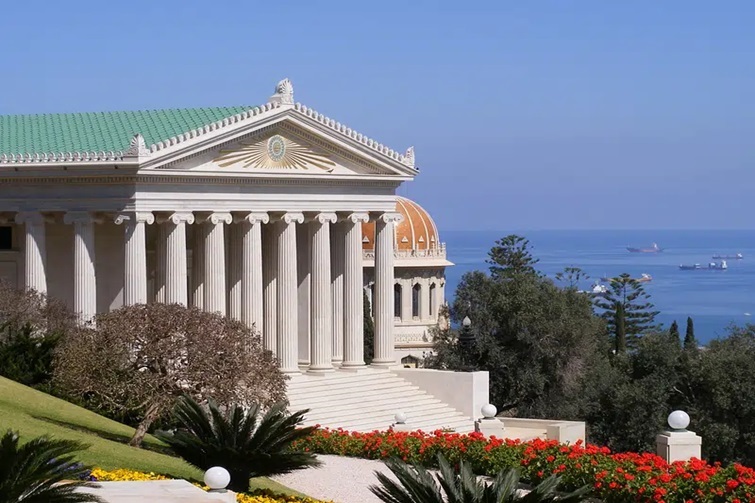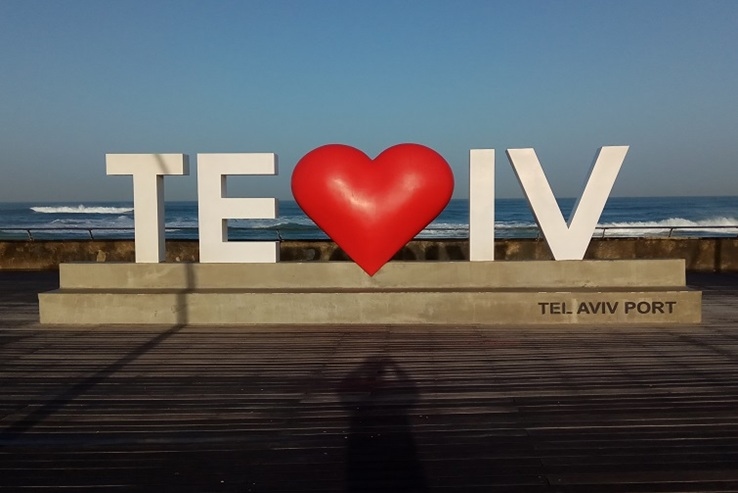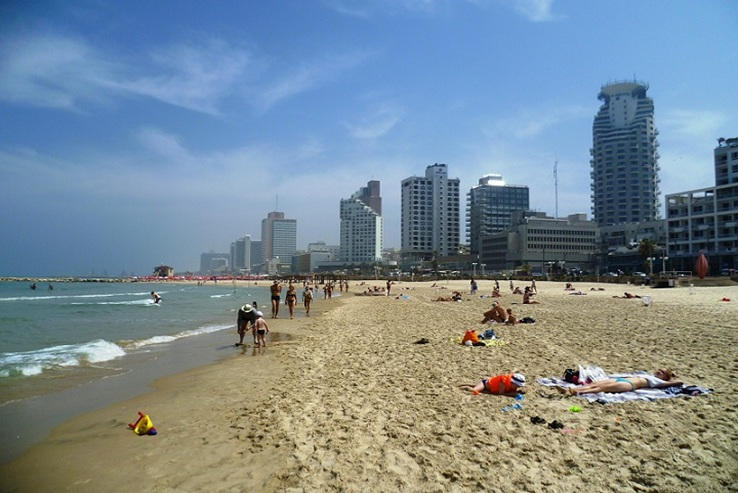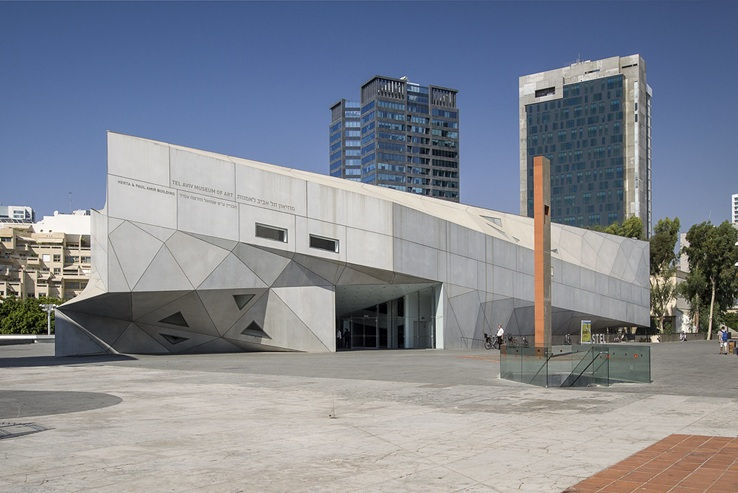Dead Sea Attractions
Top Things to Do at the Dead Sea
Revised and Updated – April 2024
Table of Contents
- The Dead Sea: Where Relaxation Meets Adventure
- 1. Float in the Dead Sea
- 2. Indulge in a Mud Bath
- 3. Explore Masada National Park
- 4. Hike in Ein Gedi Nature Reserve
- 5. Visit the Qumran Caves
- 6. Hike Mount Sodom
- 7. Experience a Bedouin Camp
- 8. Rappel and Canyon in the Desert
- 9. Stargaze in the Judean Desert
- 10. Shop for Dead Sea Products
- Conclusion
- About The Author
- Related Posts
The Dead Sea: Where Relaxation Meets Adventure
- The Dead Sea, nestled along the border of Israel and Jordan, is one of the world’s most unique and captivating destinations. It is actually a landlocked lake with cobalt-blue salty water, surrounded by stunning desert landscapes that resemble the moon’s surface. Measuring 64 kilometers (40 miles) in length and situated at an astonishing 430.5 meters (1,412 ft) below sea level, the Dead Sea holds the distinction of being the lowest point on Earth and the world’s largest natural spa.
- But the Dead Sea is much more than just a giant saltwater bath. Visiting the Dead Sea offers a unique blend of therapeutic waters, historical wonders, and dramatic landscapes. Here are the top 10 Dead Sea attractions and activities that every visitor should consider.

1. Float in the Dead Sea
- Floating in the Dead Sea is a once-in-a-lifetime experience due to its extraordinary buoyancy. The extremely high salt concentration, about ten times saltier than typical seawater, allows you to effortlessly float on the water’s surface. This unique phenomenon provides a sense of weightlessness and relaxation that is both surreal and soothing. It’s also a great photo opportunity, as you can read a book or newspaper while floating.
- Location: Accessible from various beaches along the Israeli coast of the Dead Sea.
- What to Bring: Swimwear, water shoes (to protect from sharp salt crystals), and a towel.
- Safety: Avoid swallowing the water and keep it out of your eyes due to its high salt content.
- Pro Tip: Avoid shaving or waxing a day before your visit to prevent stinging. Bring water shoes to navigate the rocky shoreline comfortably.

2. Indulge in a Mud Bath
- The mineral-rich mud from the Dead Sea is known for its therapeutic properties, making it a favorite among visitors seeking natural health treatments. The mud is packed with minerals like magnesium, sodium, and potassium, which are beneficial for the skin. Applying the mud to your body helps exfoliate dead skin cells, detoxify the skin, and improve circulation. Many people report that their skin feels softer and more rejuvenated after a Dead Sea mud bath.
- Location: Many public beaches and resorts offer areas for mud bathing.
- What to Bring: An old swimsuit (the mud can stain), and a change of clothes.
- Extra: Follow the mud bath with a rinse in the Dead Sea for maximum benefits.
- Pro Tip: Apply the mud in layers and let it dry completely before rinsing off for maximum benefits.
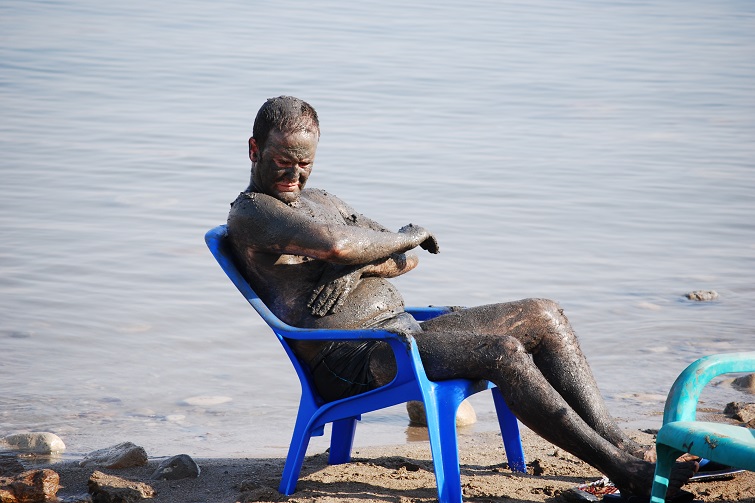
3. Explore Masada National Park
- Masada is not only a historical treasure but also a symbol of ancient Jewish resilience. This ancient fortress, perched atop a rock plateau, was the site of the last stand of Jewish rebels against the Roman Empire in 73-74 CE. The site’s dramatic history is matched by its breathtaking views of the Dead Sea and the Judean Desert. The well-preserved ruins include palaces, storerooms, and ancient bathhouses, offering a fascinating glimpse into the past.
- Location: About 20 km east of Arad.
- Access: Hike up the Snake Path or take a cable car.
- Best Time to Visit: Early morning to avoid the heat and catch the sunrise.
- Pro Tip: Take the cable car up and hike down the Snake Path for an adventurous yet manageable experience.

4. Hike in Ein Gedi Nature Reserve
- Ein Gedi is an oasis of natural beauty amidst the harsh desert landscape. This nature reserve is home to a variety of wildlife, including ibexes and hyraxes, and features lush vegetation and stunning waterfalls. The contrast between the verdant trails and the arid surroundings creates a breathtaking setting for hiking. The David Waterfall, in particular, is a highlight, offering a refreshing spot to cool off during a hike.
- Location: Along Route 90, near the Dead Sea.
- What to Bring: Comfortable hiking shoes, water, and a hat.
- Highlights: The David Waterfall and the Arugot Stream.
- Pro Tip: Carry plenty of water and wear sturdy shoes for the best hiking experience. Visit early to avoid crowds and midday heat.
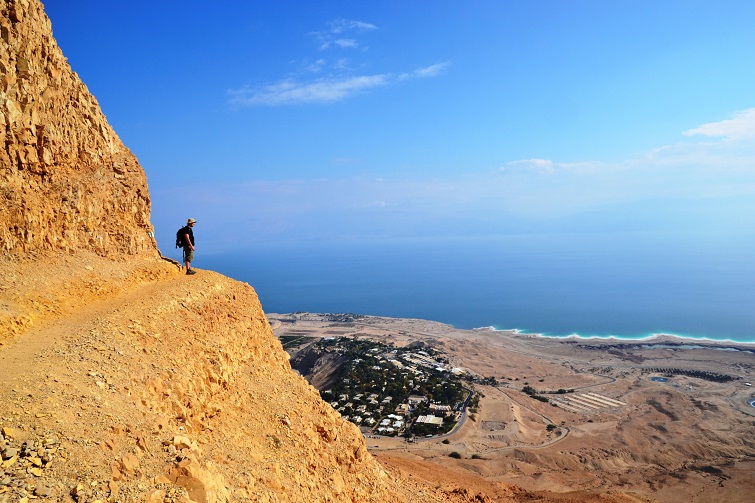
5. Visit the Qumran Caves
- The Qumran Caves are historically significant as the discovery site of the Dead Sea Scrolls, some of the oldest known manuscripts of the Hebrew Bible. These ancient texts, hidden for nearly two millennia, have provided invaluable insights into early Jewish practices and the origins of Christianity. The site includes an archaeological park where you can see the remains of the settlement believed to have been inhabited by the Essenes, a Jewish sect that likely authored the scrolls.
- Location: Near the northwestern shore of the Dead Sea.
- What to Bring: Sunscreen and a camera.
- Extra: Explore the nearby Qumran National Park for more archaeological findings.
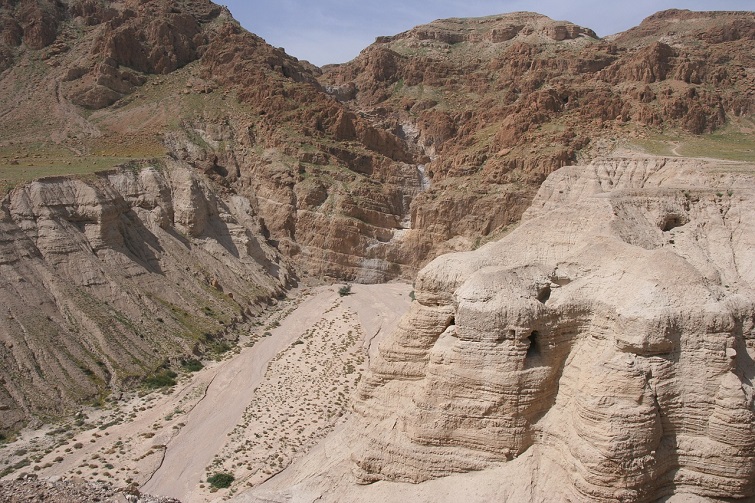
6. Hike Mount Sodom
- Mount Sodom, composed largely of salt, offers a unique hiking experience with its striking geological formations. The mountain is known for its dramatic landscapes and the famous “Lot’s Wife” salt pillar. Hiking here provides a chance to explore an otherworldly environment, where the salt formations glisten in the sunlight. The panoramic views of the Dead Sea and the surrounding desert make it a rewarding destination for outdoor enthusiasts.
- Location: Near the southern end of the Dead Sea.
- What to Bring: Hiking gear, water, and a camera.
- Highlights: The “Lot’s Wife” salt pillar.
- Pro Tip: Start your hike early in the morning or late afternoon to avoid the heat, and bring plenty of water and sun protection.
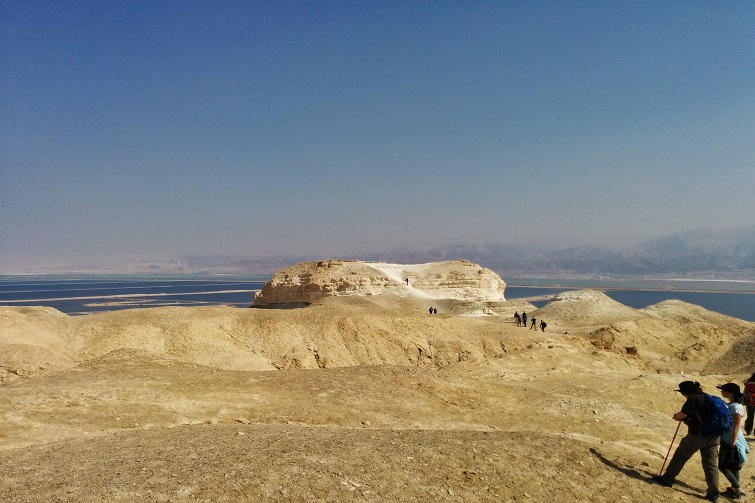
7. Experience a Bedouin Camp
- Visiting a Bedouin camp allows you to experience the rich cultural heritage and hospitality of the Bedouin people. These traditional nomadic tribes have a deep connection to the desert, and their lifestyle offers a fascinating glimpse into a way of life that has persisted for centuries. Enjoy authentic Bedouin cuisine, listen to traditional music, and learn about their customs and traditions. It’s a unique cultural immersion that enriches your understanding of the region.
- Location: Several camps are located in the Judean Desert area.
- What to Bring: Comfortable clothing and an open mind.
- Extra: Participate in activities like camel rides and desert tours offered by the camps.
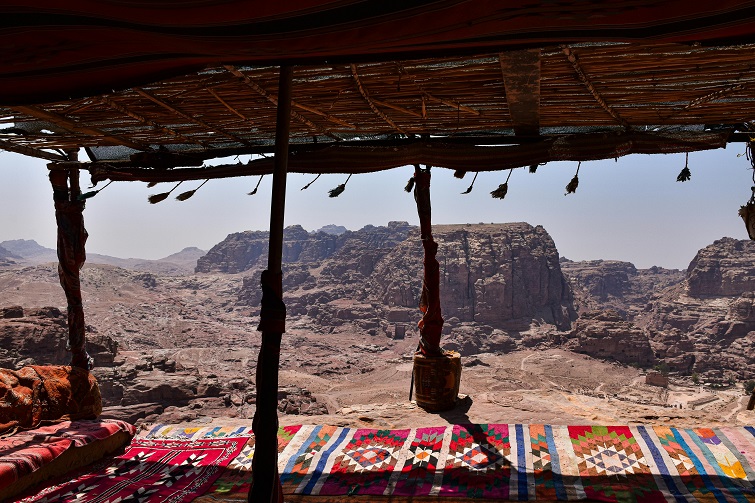
8. Rappel and Canyon in the Desert
- Rappelling and canyoning in the Judean Desert offer thrilling adventures that showcase the region’s rugged beauty. The cliffs and gorges provide an exhilarating environment for these activities, combining the excitement of adventure sports with the stunning scenery of the desert. It’s an opportunity to explore hidden canyons, climb rock faces, and rappel down cliffs, all under the guidance of experienced professionals.
- Location: Various spots in the Judean Desert.
- What to Bring: Athletic clothing, sturdy shoes, and a sense of adventure.
- Safety: Always go with a professional guide for safety.
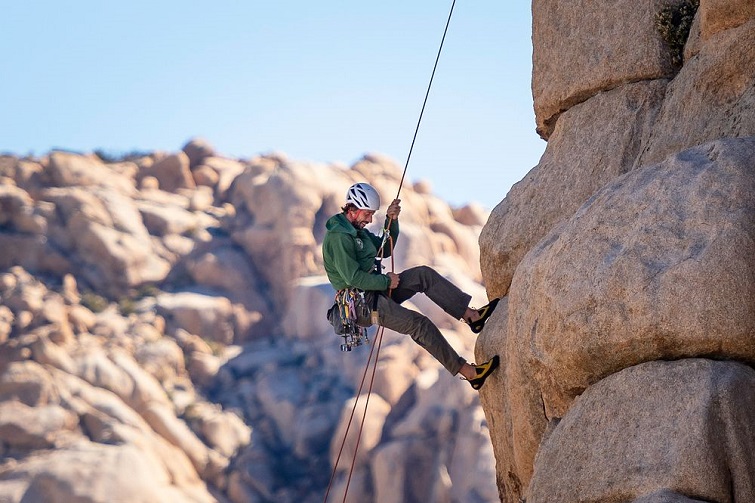
9. Stargaze in the Judean Desert
- The Judean Desert’s clear, unpolluted skies make it an ideal location for stargazing. Away from the light pollution of cities, the desert provides a perfect backdrop for observing the night sky. Whether you’re an amateur astronomer or just enjoy looking at the stars, the desert’s tranquility and clarity offer a spectacular stargazing experience. Many guided tours provide telescopes and expert insights into the constellations and celestial phenomena.
- Location: Various spots in the Judean Desert.
- What to Bring: A blanket, a telescope or binoculars, and a star map.
- Best Time: On clear nights, away from city lights.
- Pro Tip: Bring a telescope or binoculars for an enhanced experience. A stargazing app can also help identify celestial objects.
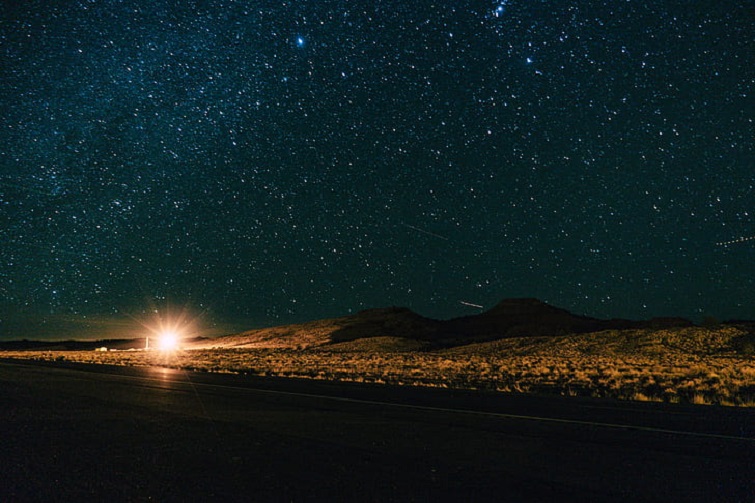
10. Shop for Dead Sea Products
- The Dead Sea is famous for its mineral-rich products known for their therapeutic and cosmetic benefits. Shopping for high-quality Dead Sea products allows you to bring home a piece of this unique region and are ideal for memorable souvenirs. A highlight for many visitors is the AHAVA Visitor Center, where you can learn about the production process, watch the production in the making, and purchase fresh Dead Sea cosmetics.
- Where to Shop: Boutiques and stores in resort areas and local markets.
- AHAVA Visitor Center: Located at the northern end of the Dead Sea, this center offers guided tours and an extensive range of Dead Sea products.
- What to Buy: Mud masks, salt scrubs, moisturizers, and bath salts.
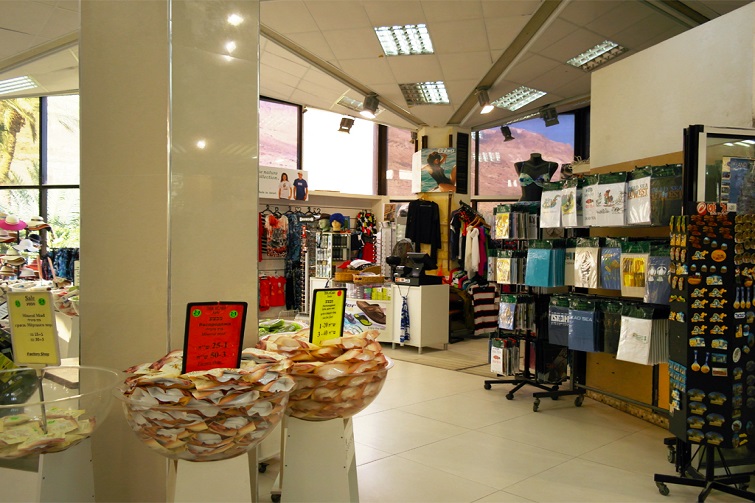
Conclusion
The Dead Sea attractions offer an unparalleled combination of natural splendor, rich history, and unique activities that cater to a wide range of interests. From the therapeutic properties of its mineral-rich waters to the ancient ruins and cultural landmarks that dot the landscape, this remarkable destination promises a memorable experience for every visitor. Whether you’re floating in the buoyant sea, exploring historical sites, or indulging in a luxurious spa treatment, the Dead Sea is sure to leave a lasting impression. So plan your trip today and discover the magic of this extraordinary place.
Related Posts
Explore More Travel Guides with Tips to Make Your Trip Better



